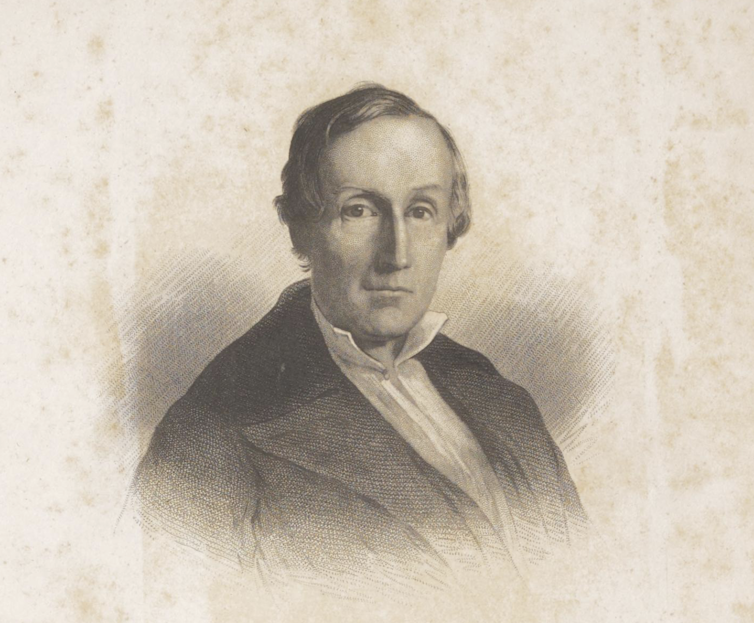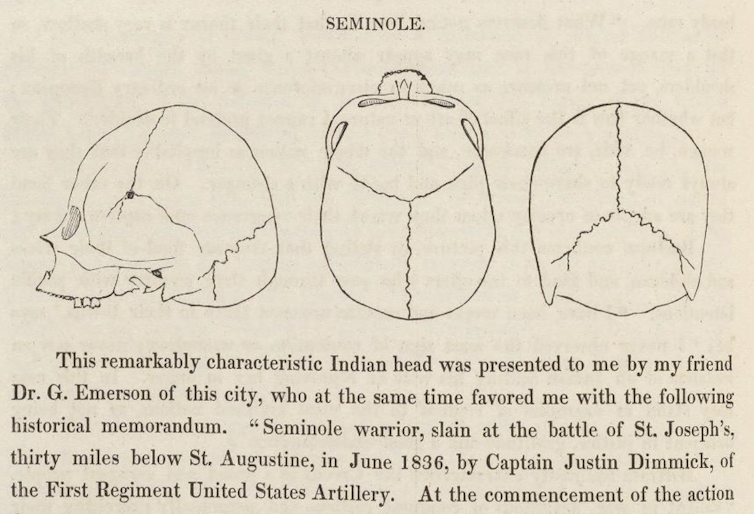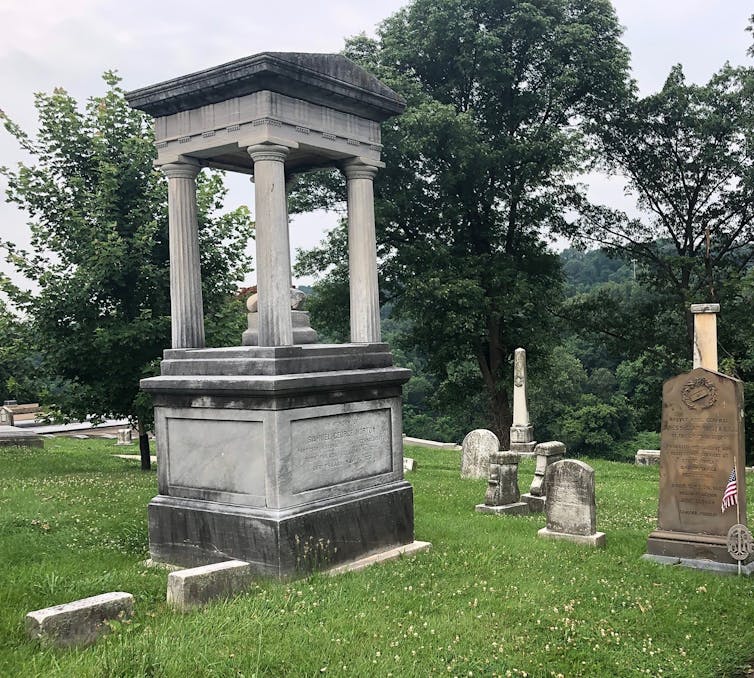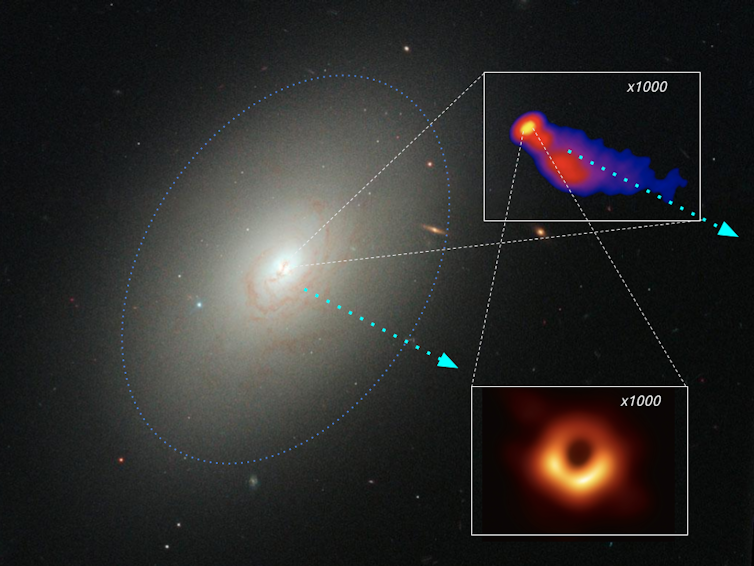The Conversation
November 18, 2024

Human Skull (AFP)
When I started my research on the Samuel George Morton Cranial Collection, a librarian leaned over my laptop one day to share some lore. “Legend has it,” she said, “John James Audubon really collected the skulls Morton claimed as his own.” Her voice was lowered so as not to disturb the other scholars in the hushed archive.
As my work progressed, I uncovered no evidence to substantiate her whispered claim. Audubon had collected human skulls, several of which he then passed on to Morton. But birds and ornithology remained Audubon’s passion.
Nevertheless, the librarian’s offhanded comment has proven useful – a touchstone of sorts that continues to remind me of the controversy and confusion long surrounding the Morton Collection.
Morton was a physician and naturalist who lived in Philadelphia from 1799 until the end of his life in 1851. A lecture he delivered to aspiring doctors at the Philadelphia Association for Medical Instruction outlined the reasons for his cranial compulsion:
“I commenced the study of Ethnology in 1830; in which year, having occasion to deliver an introductory lecture on Anatomy, it occurred to me to illustrate the difference in the form of the skull as seen in the five great races of men … When I sought the materials for my proposed lecture, I found to my surprise that they could be neither bought nor borrowed.”
He would go on to acquire almost 1,000 human skulls.
Morton used these skulls to advance an understanding of racial differences as natural, easily categorizable and able to be ranked. Big-brained “Caucasians,” he argued in the 1839 publication “Crania Americana,” were far superior to small-skulled American Indians and even smaller-skulled Black Africans. Many subsequent scholars have since thoroughly debunked his ideas.
Certainly, condemnation of Morton as a scientific racist is warranted. But I find this take represents the man as a caricature, his conclusions as foregone. It provides little insight into his life and the complicated, interesting times in which he lived, as I detail in my book “Becoming Object: The Sociopolitics of the Samuel George Morton Cranial Collection.”
My research demonstrates that studies of skulls and diseases undertaken by Morton and his medical and scientific colleagues contributed to an understanding of U.S. citizenship that valued whiteness, Christianity and heroic masculinity defined by violence. It is an exclusionary idea of what it means to be American that persists today.
Yet, at the same time, the collection is an unintended testament to the diversity of the U.S. population during a tumultuous moment in the nation’s history.

Samuel Morton wasn’t a lone voice on the fringe of medicine. 'Memoir of the life and scientific labors of Samuel George Morton' by Henry S. Patterson, CC BY
Men of science and medicine
As a bioarchaeologist who has studied the Morton Collection for many years, I have sought to better understand the social, political and ideological circumstances that led to its creation. From my work – analyzing archival sources including letters, laws, maps and medical treatises, as well as the skulls themselves – I’ve learned that, over a lifetime, Morton fostered a professional network that had far-reaching tentacles.
He had plenty of help amassing the collection of skulls that bears his name.
The physician connected with medical colleagues – many of whom, like him, received degrees from the University of Pennsylvania – gentleman planters, enslavers, naturalists, amateur paleontologists, foreign diplomats and military officers. Occupational differences aside, they were mostly white, Christian men of some financial means.
Their interactions took place during a pivotal moment in American history, the interlude between the nation’s revolutionary consolidation and its violent civil unraveling.
Throughout this stretch of time, Morton and his colleagues catalyzed biomedical interventions and scientific standards to more effectively treat patients. They set in motion public health initiatives during epidemics. They established hospitals and medical schools. And they did so in the service of the nation.
Not all lives were seen as worthy of these men’s care, however. Men of science and medicine may have fostered life for many, but they also let others die. In “Becoming Object,” I track how they represented certain populations as biologically inferior; diseases were tied to nonwhite people, female anatomy was pathologized, and poverty was presumed inherited.
From person to specimen
Such representations made it easier for Morton and his colleagues to regulate these groups’ bodies, rationalize their deaths and collect their skulls with casual cruelty from almshouse dissecting tables, looted cemeteries and body-strewn battlefields. That is, a sizable portion of the skulls in Morton’s collections were not culled from ancient graves but belonged to those of the recently alive.
It is no coincidence that Morton began his scientific research in earnest the same year Andrew Jackson signed the Indian Removal Act of 1830. Men of science and medicine benefited from the expansionist policies, violent martial conflicts and Native displacement that underpinned Manifest Destiny.

A drawing from Morton’s book of the skull of a Seminole man killed by American troops. A bullet hole is visible on the left side of the man’s head. 'Crania Americana' by Samuel George Morton, CC BY
The collection reveals these acts of nation-building as necropolitical strategies – techniques used by sovereign powers to destroy or erase certain, often already vulnerable, populations from the national consciousness. These skulls attest to precarious existences, untimely deaths and trauma experienced from cradle to beyond the grave.
In the specific case of Native Americans, skeletal analysis testifies to the violent effects of U.S. military campaigns and forced removal. Native skulls that Morton labeled “warriors” have evidence of unhealed fractures and gunshot wounds. Children’s skulls bear the marks of compromised health; such pathology and their young ages at death are evidence of long-standing malnutrition, poverty and deprivation or stress.
To effectively transform subjects into objects – human beings into specimens – collected crania were ensconced in the institutional spaces of medical school lecture halls and museum storage cabinets.
There, Morton first numbered them sequentially. These numbers along with information about race, sex, age, “idiocy” or “criminality,” cranial capacity and provenance were inked on skulls and written in catalogs. Very rarely was the person’s name recorded. If used as teaching tools, Morton drilled holes to hang the skulls for display and notated them with the names of skeletal elements and features.
As dehumanizing as this process was, the Morton Collection does contain evidence of resilience and heterogeneous lives. There are traces of people with mixed-race backgrounds such as Black Indians. Several people may have also bent gender to navigate dire conditions or in keeping with social norms, such as native Beloved Women, who were active in warfare and political life.

In contrast to those whose skulls ended up in his collection, Samuel Morton’s own grave was memorialized with a monument. Pamela L. Geller
What these bones mean today
As anthropologists now recognize, it is through the repatriation of the remains of the people in the Morton Collection to their descendants, among other types of reparations, that current practitioners may begin to atone for the sins of intellectual forebears. Indeed, all institutions housing legacy collections must contend with this issue.
There are other, valuable lessons – about diversity and suffering – that the Morton Collection has to impart in today’s interesting times.
The collection demonstrates that the American body politic has always been a diverse one, despite efforts of erasure by men like Morton and his colleagues. Piecing together the stories of past, disenfranchised lives – and acknowledging the silences that have made it difficult to flesh them out – counters past white nationalism and xenophobia and their current resurgence.
The collection, I believe, also urges the repudiation of violence, casual cruelty and opportunism as admirable attributes of masculinity. Valorizing men who embody these qualities has never served America well. Particularly in the mid-1800s, when Morton amassed skulls, it led to a nation divided and hardened to suffering, an unfathomable death count and the increasing fragility of democracy.

Pamela L. Geller, Associate Professor of Anthropology, University of Miami
This article is republished from The Conversation under a Creative Commons license. Read the original article.



